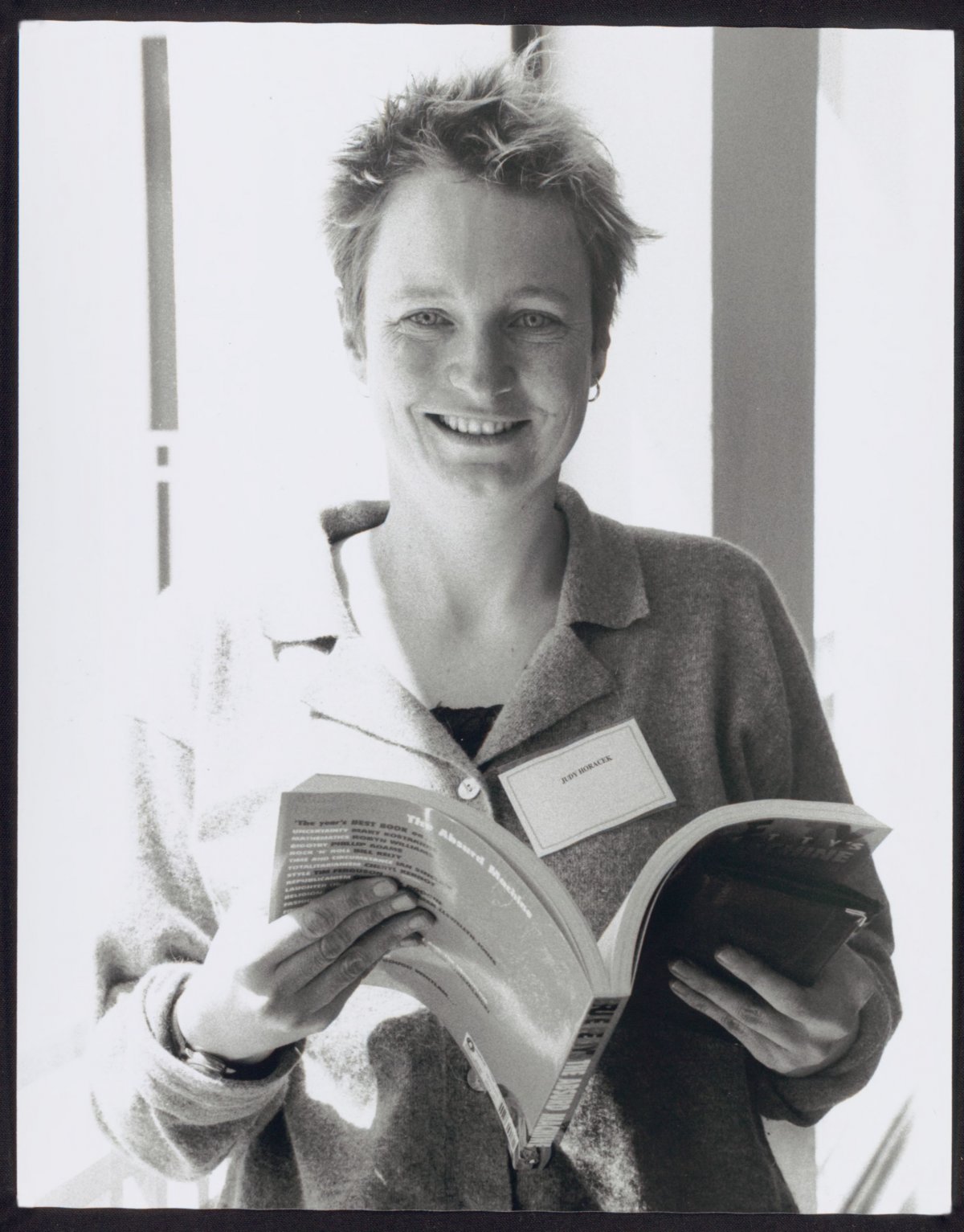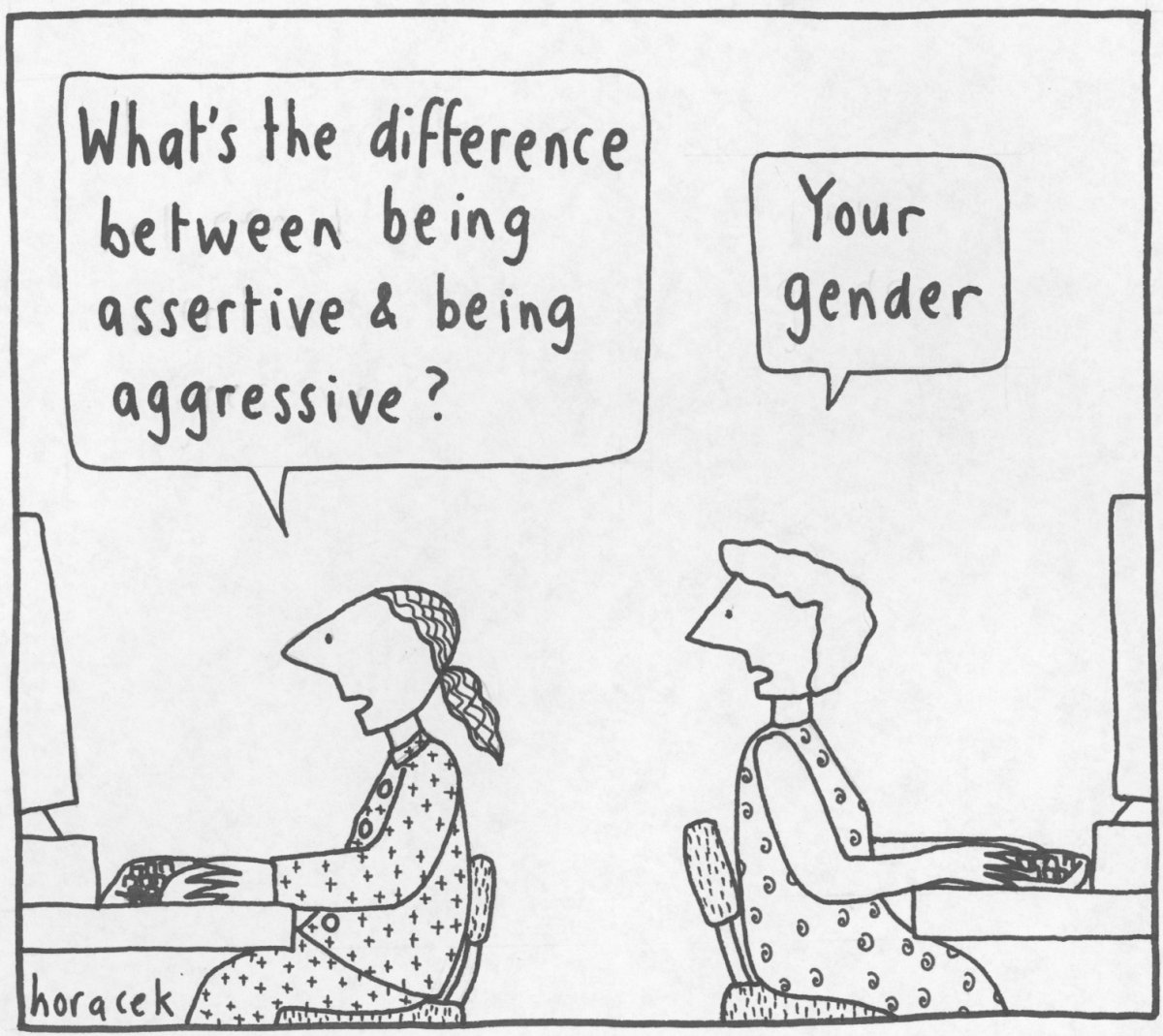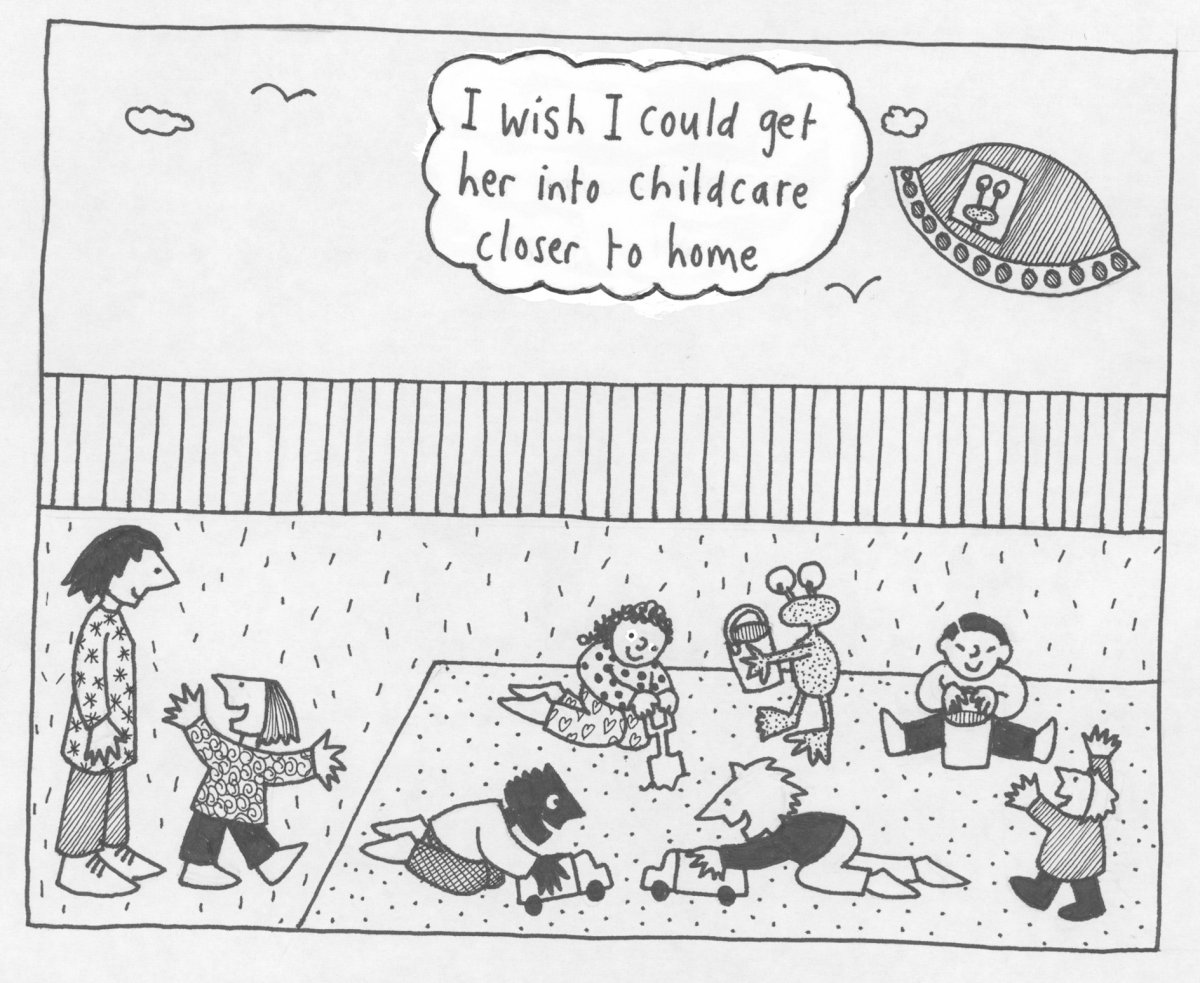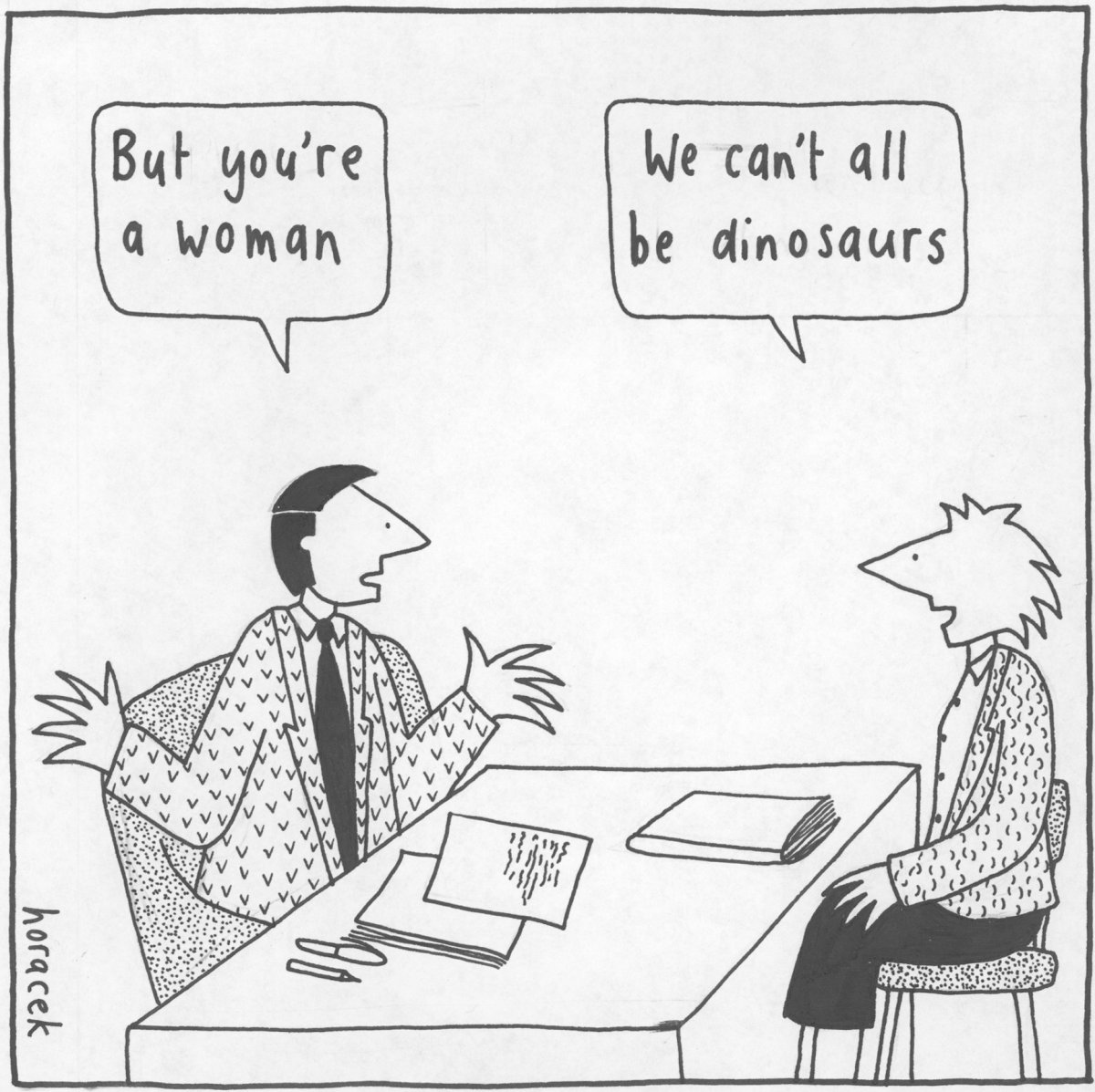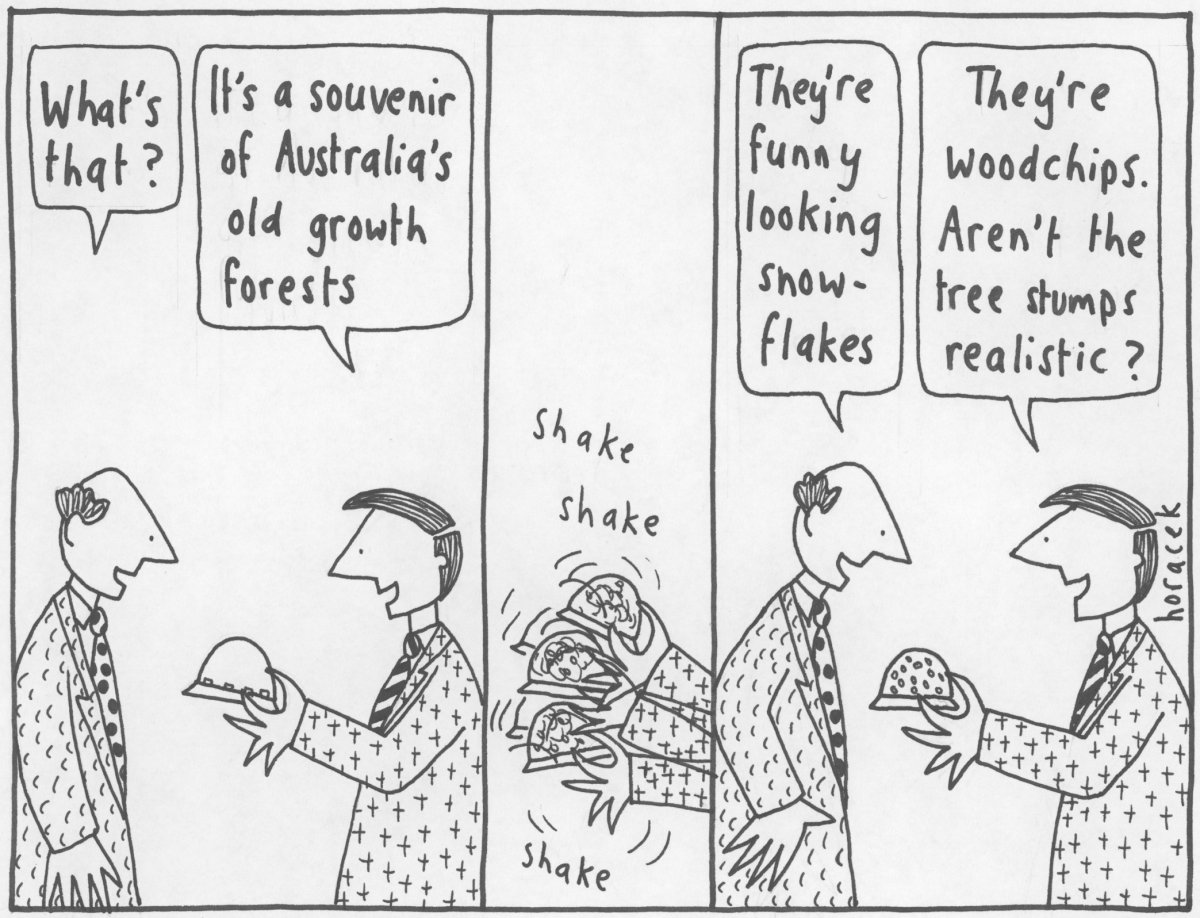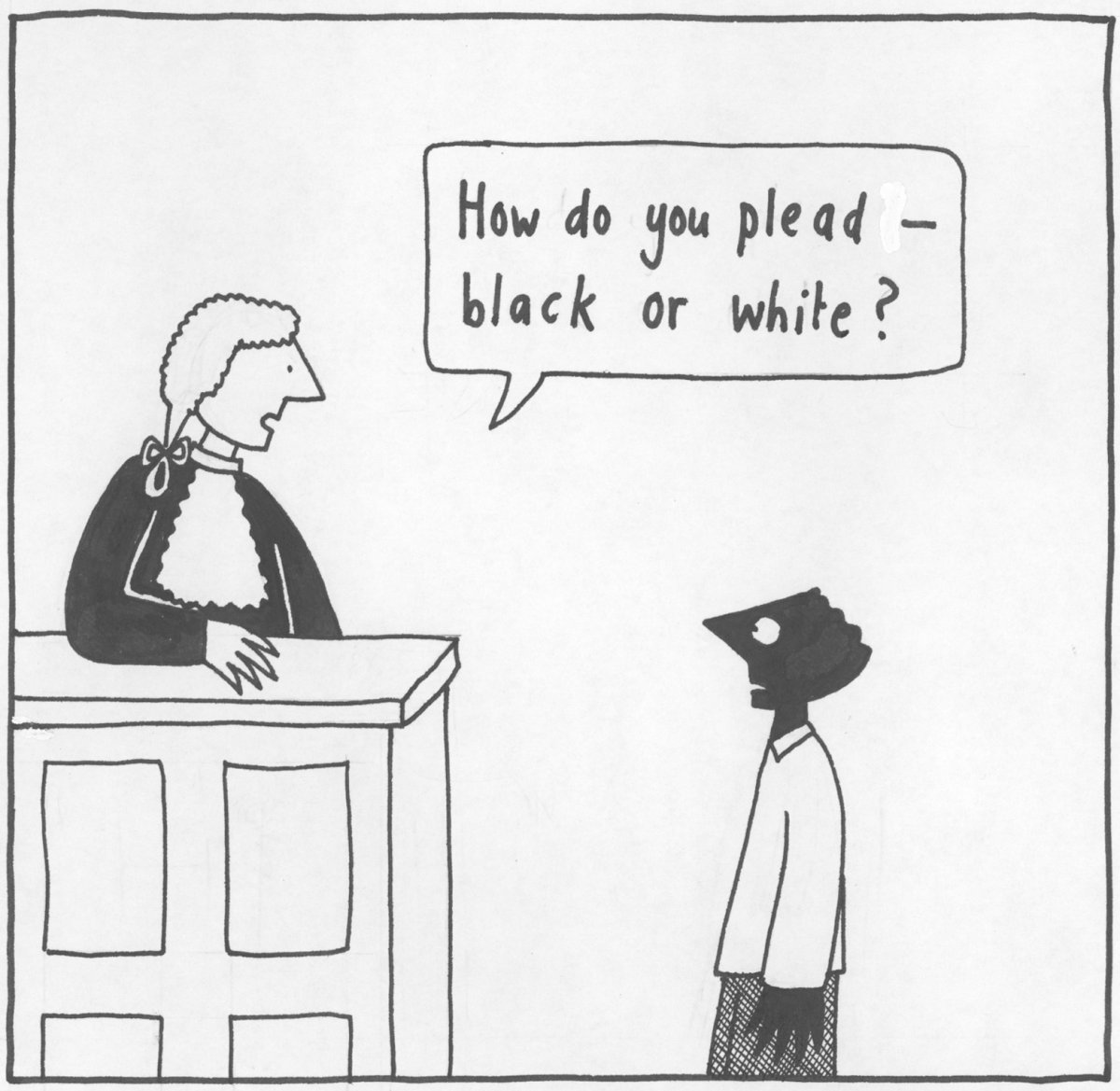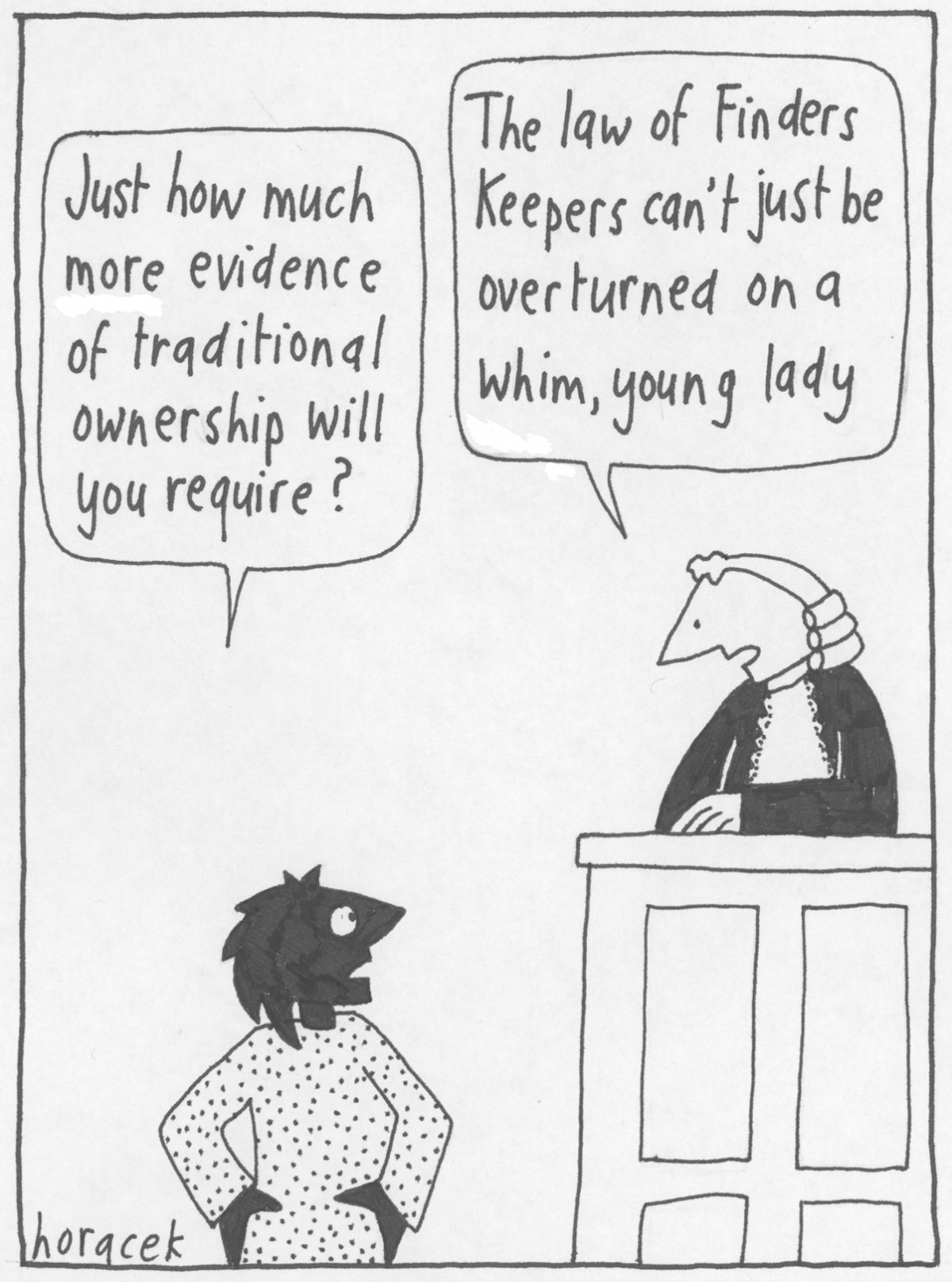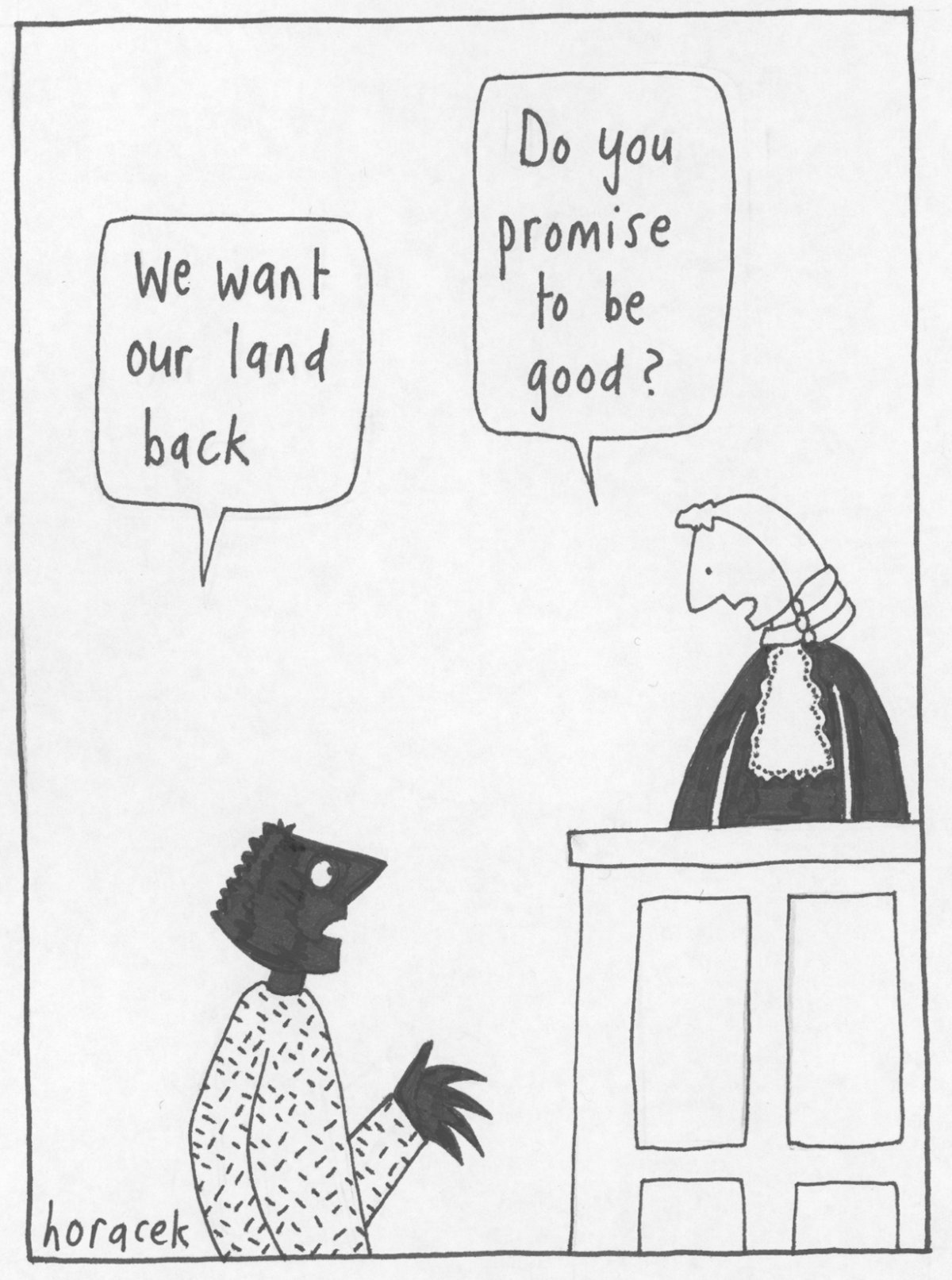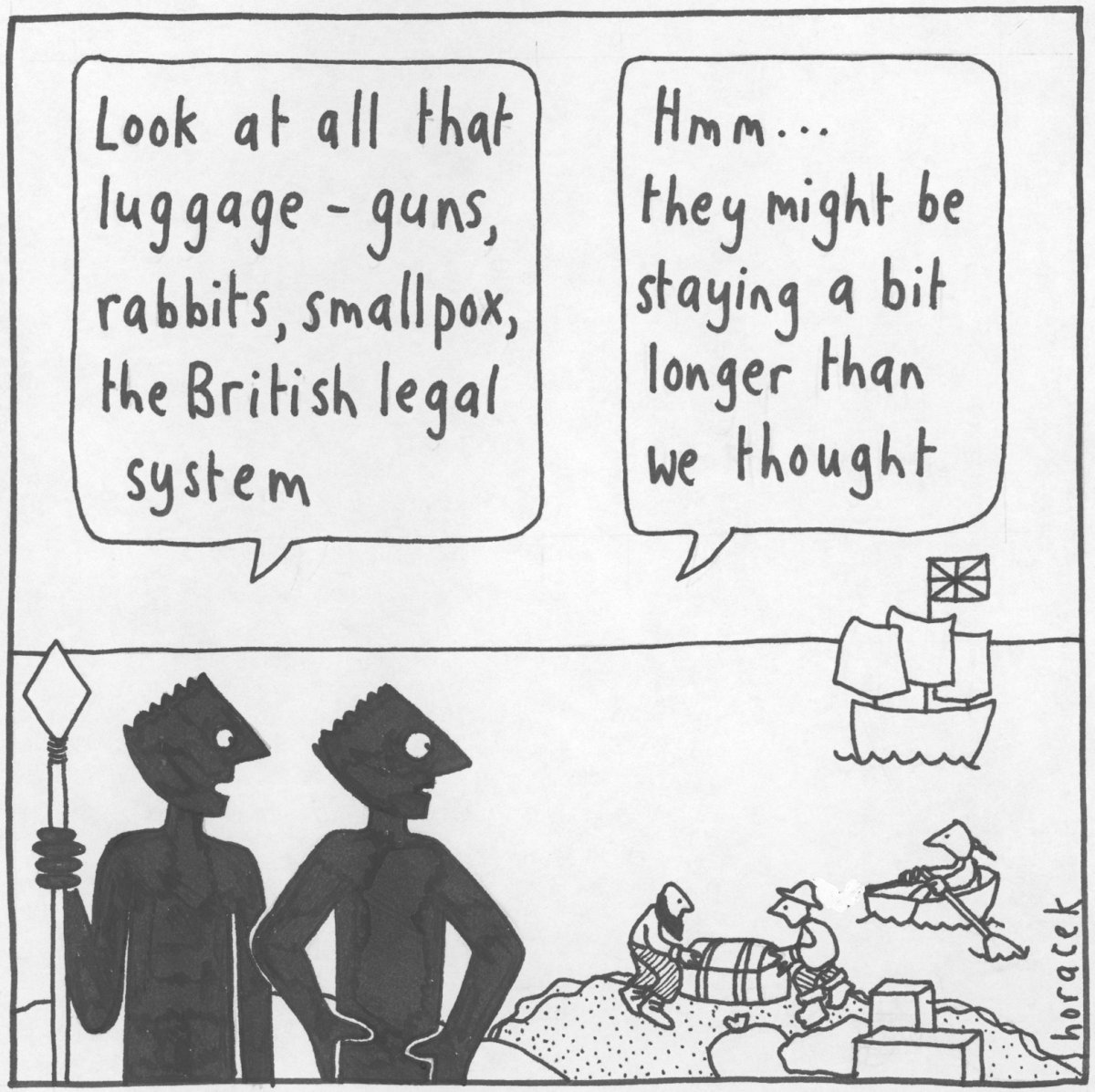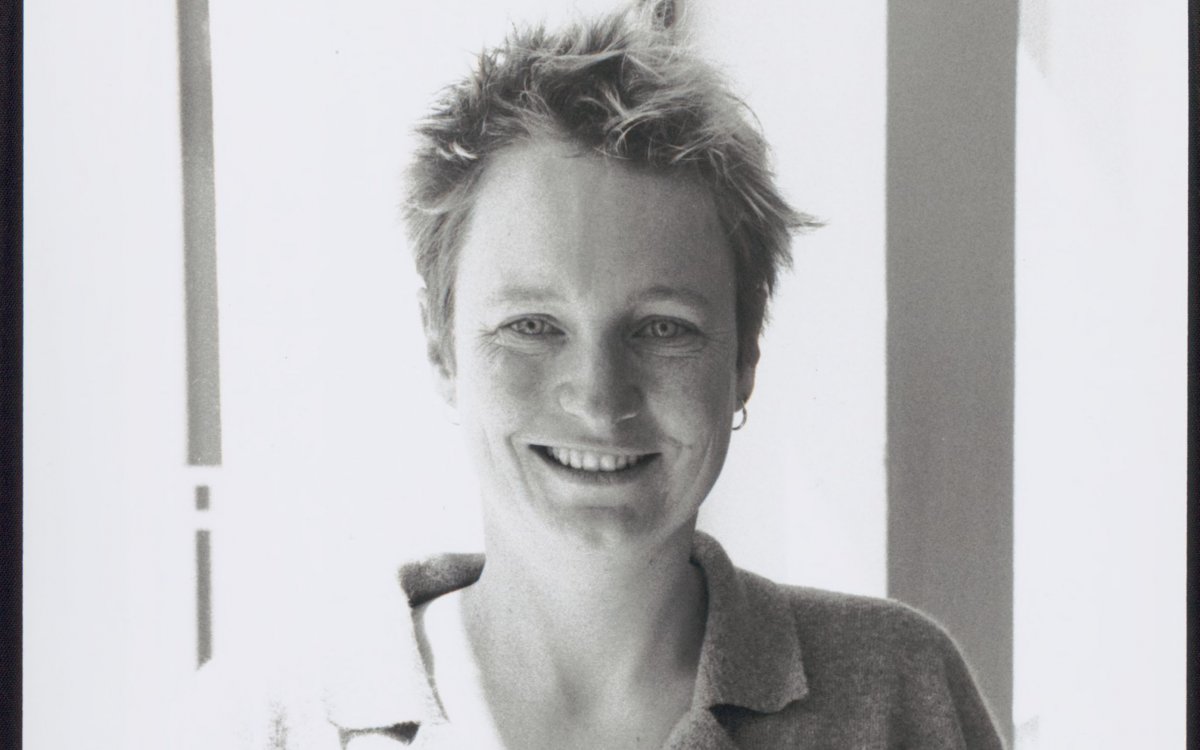
Wallace-Crabbe, Virginia, 1941-. (1997). Portrait of Judy Horacek, cartoonist [picture] / Virginia Wallace-Crabbe. https://nla.gov.au/nla.obj-136400722
Judy Horacek was born in 1961. In 1991, she completed a degree at the University of Melbourne, where she majored in Fine Arts and English. Since then she has also been a scholar of Museum Studies at Victoria University (2007) and studied at the Australian National University School of Art, where she majored in Printmedia and Drawing.
Horacek is one of Australia’s most popular cartoonists. Her work has been published in the Melbourne Age, The Sydney Morning Herald and in journals, as well as appearing on ceramic pieces, tea towels, greeting cards and fridge magnets. Much of her work focuses on feminist ideology, including women in the work place, women and politics, and women’s place in society. Her spiky-haired heroines reflect Horacek’s perceptions about how the world works, and her opinions on how it might be fairer (and funnier). The feisty women in Horacek's cartoons give snappy one-liners and cutting political analysis. As Horacek herself says: ‘My characters are a bit like an everywomen. They are braver, sassier, larger than I am with a rapier-like wit. One can't help but admire them’.
Themes in Judy Horacek’s work are:
- feminism
- conservatism (criticism of)
- distrust of government/institutions
- interactions with technology
- working life/career
- environmentalism
- Indigenous rights/issues
- civil rights
Judy Horacek was born in 1961. In 1991, she completed a degree at the University of Melbourne, where she majored in Fine Arts and English. Since then she has also been a scholar of Museum Studies at Victoria University (2007) and studied at the Australian National University School of Art, where she majored in Printmedia and Drawing.
Horacek is one of Australia’s most popular cartoonists. Her work has been published in the Melbourne Age, The Sydney Morning Herald and in journals, as well as appearing on ceramic pieces, tea towels, greeting cards and fridge magnets. Much of her work focuses on feminist ideology, including women in the work place, women and politics, and women’s place in society. Her spiky-haired heroines reflect Horacek’s perceptions about how the world works, and her opinions on how it might be fairer (and funnier). The feisty women in Horacek's cartoons give snappy one-liners and cutting political analysis. As Horacek herself says: ‘My characters are a bit like an everywomen. They are braver, sassier, larger than I am with a rapier-like wit. One can't help but admire them’.
Themes in Judy Horacek’s work are:
- feminism
- conservatism (criticism of)
- distrust of government/institutions
- interactions with technology
- working life/career
- environmentalism
- Indigenous rights/issues
- civil rights
What is a cartoon?
The term ‘cartoon’ is from the Italian cartone, meaning paper. In the middle ages, it was used to refer to sketches that had been drawn for larger works, such as canvases, frescos, tapestries or mosaics. From the nineteenth century, a cartoon came to mean an amusing illustration in newspapers, magazines or online.
Australia has a strong history of political cartooning. Tasmania’s Cornwall Chronicle was the first Australian newspaper to feature political cartoons, in 1835. South Australia’s Adelaide Month Almanac and Victoria’s Melbourne Punch began publishing cartoons in 1850 and 1855, respectively. Soon after, most state capitals began publish cartoons.
Since then, artists have been expressing their perspectives and providing witty, satirical and comical commentary on politics, sport, celebrities and current affairs. Cartoons often have the ability to express a political issue in a way that just text can’t do. A picture really can be worth 1,000 words.
These activities encourage students to think about the place that cartoons have in our society. They also introduce some of the broader concepts that Horacek deals with in her work and then explore examples from the National Library’s collection.
1. Ask students where they might find examples of cartoons (newspapers, magazines, online) and what purpose they serve (to illuminate political or social issues, to entertain us/make us laugh, to express an opinion/point of view).
2. To help introduce themes covered in Horacek’s work, create categories and discuss with the group the category to which each of the cartoons belongs. Categories could include:
- feminism
- Aboriginal/Indigenous rights
- civil rights
- environment
- work/life balance
3. Ask the class to identify any other themes in the cartoons presented.
Feminism
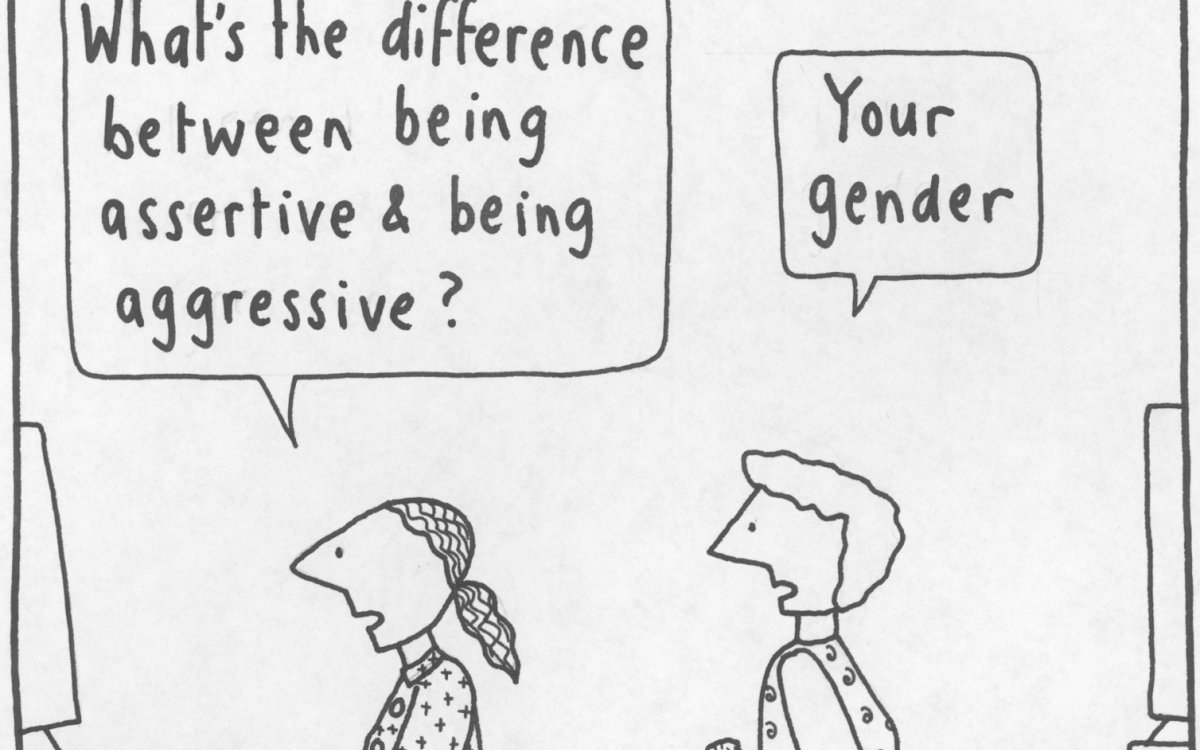
Horacek, Judy, 1961-. (1999). What's the difference between being assertive & aggressive? [picture] / Judy Horacek. http://nla.gov.au/nla.obj-148723203
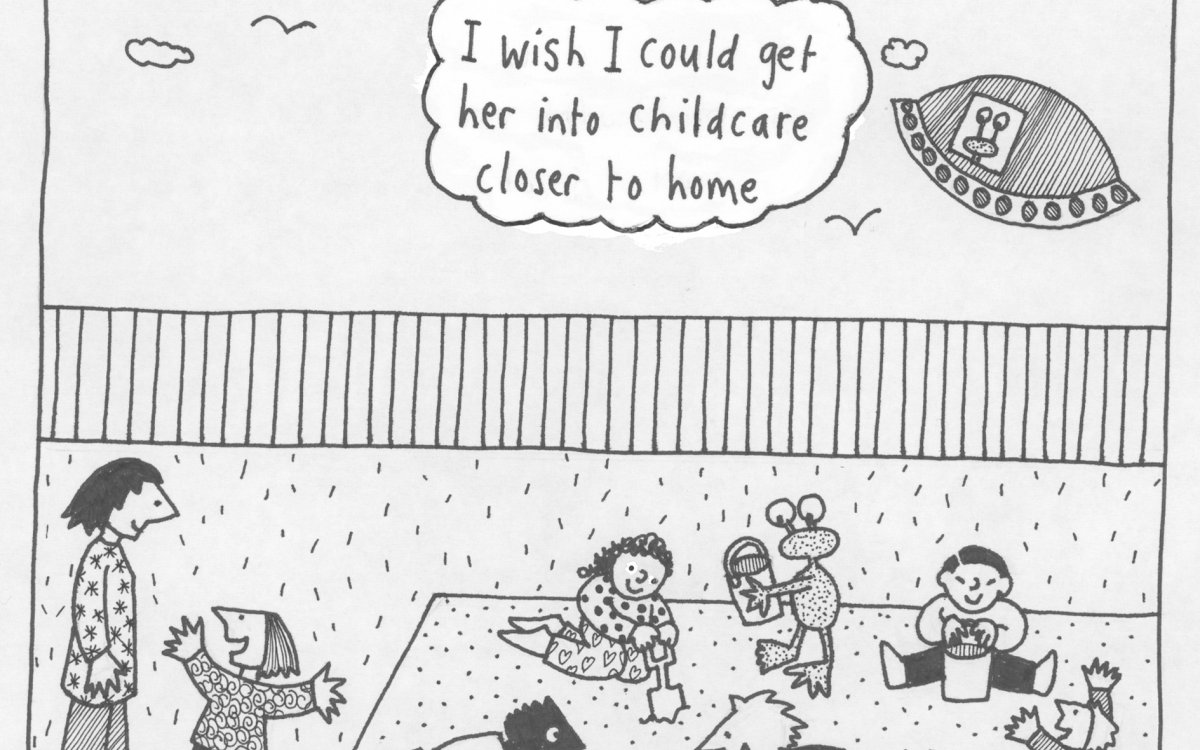
Horacek, Judy, 1961-. (1995). Childcare closer to home [picture] / Judy Horacek. http://nla.gov.au/nla.obj-148725155
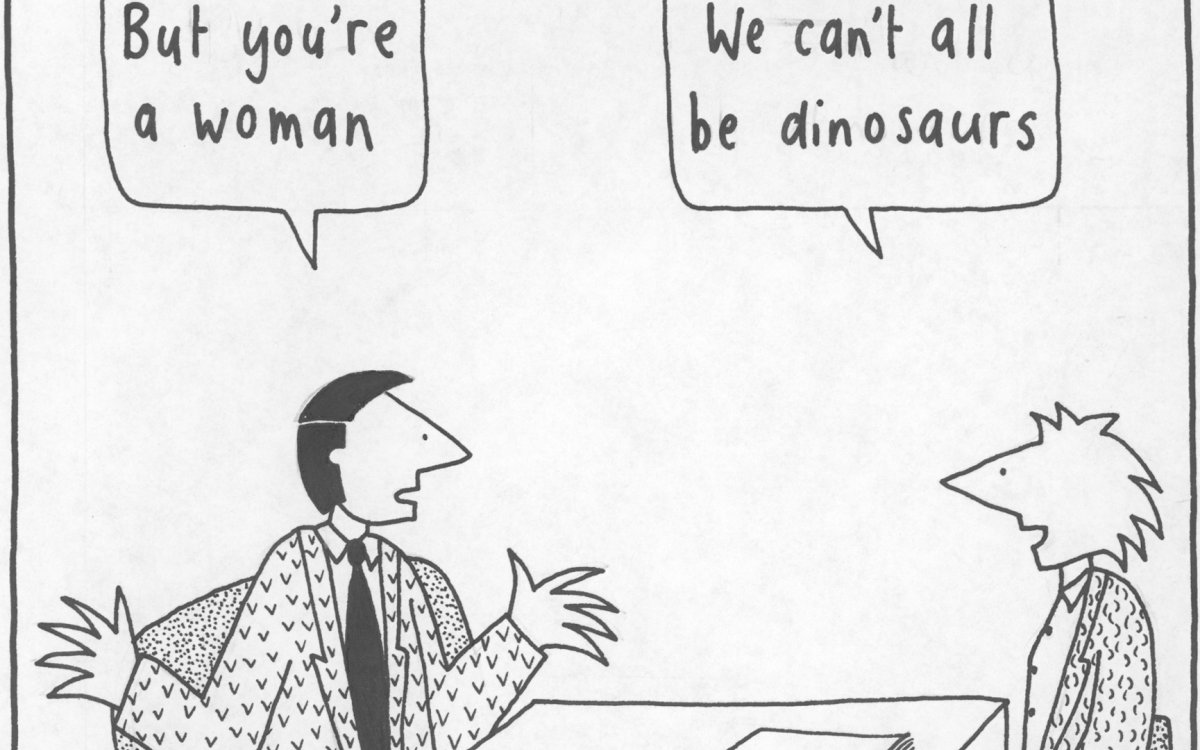
Horacek, Judy, 1961-. (1999). But you're a woman [picture] / Judy Horacek. http://nla.gov.au/nla.obj-148723108
Horacek is often described as a feminist cartoonist. After noticing a lack of females in the cartoons she was reading while growing up, she made the decision early in her career to place female characters in her cartoons.
I was born in 1961 and I remember seeing women protesting on the television and in the newspapers from when I was quite young. Marches and rallies, the controversy over Germaine Greer’s The Female Eunuch. I wasn’t old enough to do anything much except swallow the media’s line—that these women were aggressive and out of control, that women’s libbers (as feminists were then known) were people to be avoided. Of course I believed that women should receive the same pay for the same work and be allowed to keep working after marriage, and reproductive freedom and access to childcare seemed like good ideas, but did they have to be so unfeminine about it? (After forty years, and even though women’s issues are now firmly on the mainstream agenda, the media is still running the same line.)
(Judy Horacek and National Museum of Australia, I Am Woman, Hear Me Draw: Cartoons from the Pen of Judy Horacek. Canberra: National Museum of Australia, 2002, pp.9, 11)
Horacek is often described as a feminist cartoonist. After noticing a lack of females in the cartoons she was reading while growing up, she made the decision early in her career to place female characters in her cartoons.
I was born in 1961 and I remember seeing women protesting on the television and in the newspapers from when I was quite young. Marches and rallies, the controversy over Germaine Greer’s The Female Eunuch. I wasn’t old enough to do anything much except swallow the media’s line—that these women were aggressive and out of control, that women’s libbers (as feminists were then known) were people to be avoided. Of course I believed that women should receive the same pay for the same work and be allowed to keep working after marriage, and reproductive freedom and access to childcare seemed like good ideas, but did they have to be so unfeminine about it? (After forty years, and even though women’s issues are now firmly on the mainstream agenda, the media is still running the same line.)
(Judy Horacek and National Museum of Australia, I Am Woman, Hear Me Draw: Cartoons from the Pen of Judy Horacek. Canberra: National Museum of Australia, 2002, pp.9, 11)
1. Ask students to investigate the three images above using the following questions:
- Which group of people are these three cartoons most likely talking about? (women)
- What issues facing (mostly) women are these cartoons discussing? (childcare, gender discrimination/gender bias)
- Which characters do you like/empathise with? Which do you dislike/disagree with?
- What do you think the creator’s point of view is in relation to these topics? Is she a feminist? Why/why not?
2. Discuss with your class what ‘feminism’ means.
- What role has it played in our history?
- Is feminism still important today? Why/why not?
- Do you think Horacek is a feminist? What evidence can you find in these images that supports your decision?
Environment
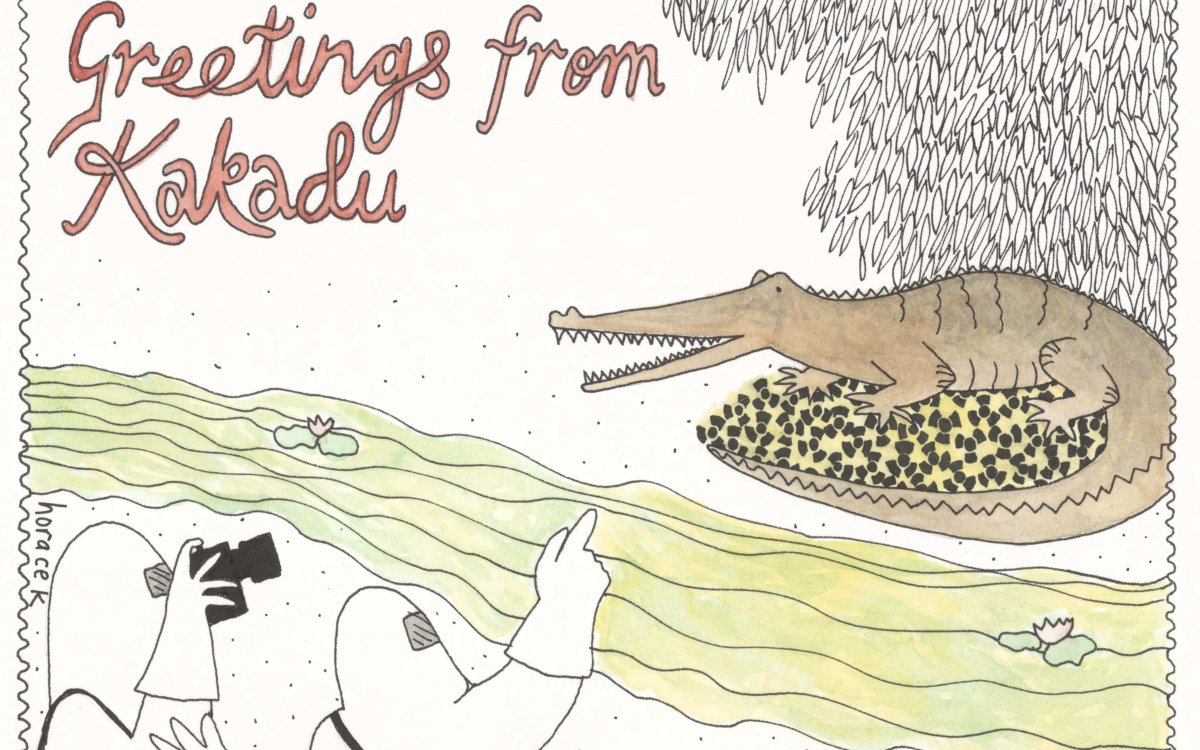
Horacek, Judy, 1961-. (1996). Greetings from Kakadu, nature's wonderland [picture] / Judy Horacek. http://nla.gov.au/nla.obj-148726809
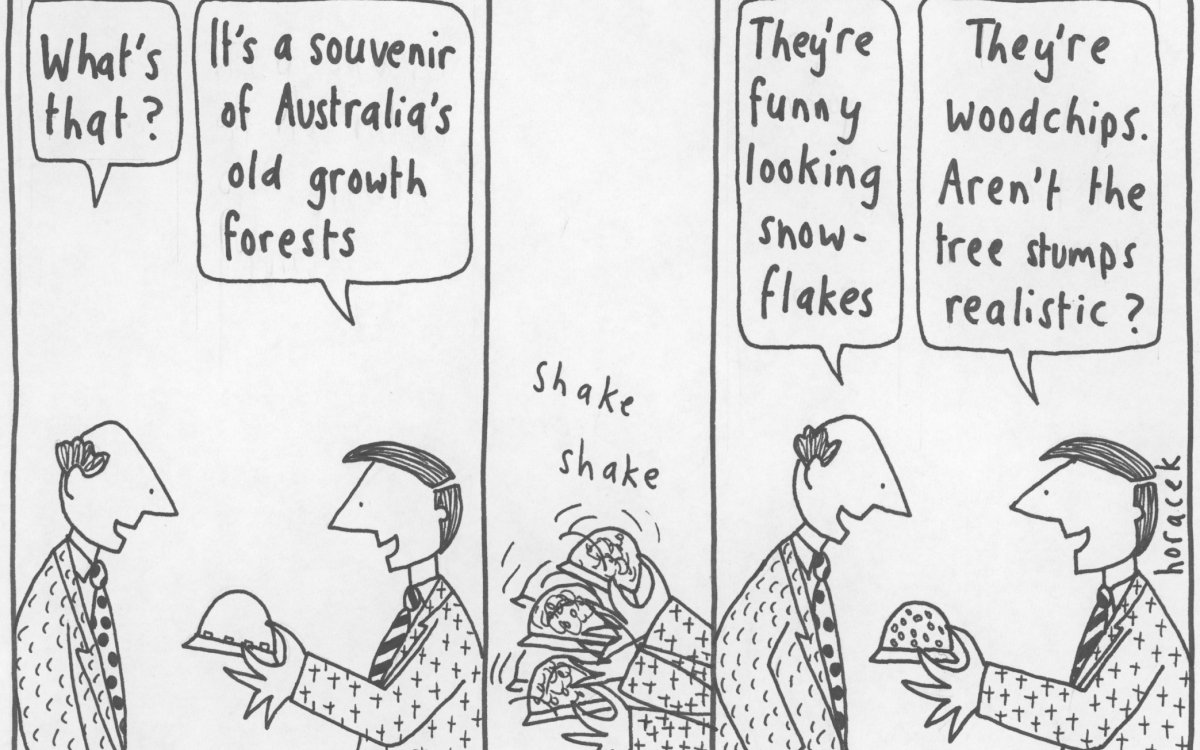
Horacek, Judy, 1961-. (1999). Souvenir of Australia's old growth forests [picture] / Judy Horacek. http://nla.gov.au/nla.obj-148723754
Horacek is a passionate advocate of environmental awareness and protection. Many of the cartoons in her book If You Can’t Stand the Heat are dedicated to the subject of environmentalism.
The issue of climate change is to me, and to many people, the most vital and urgent one facing our age. Quite a lot of the cartoons in this collection reflect this concern, and the related concern about the way global warming is having the severest consequences, not in the countries most responsible for causing it, but in the developing world, where people have so little already.
It is alarming that the uranium industry sees climate change as an opportunity to rear its ugly head and present itself as green.
(Judy Horacek, If You Can't Stand the Heat. Carlton North, Vic.: Scribe Publications, 2010)
Horacek is a passionate advocate of environmental awareness and protection. Many of the cartoons in her book If You Can’t Stand the Heat are dedicated to the subject of environmentalism.
The issue of climate change is to me, and to many people, the most vital and urgent one facing our age. Quite a lot of the cartoons in this collection reflect this concern, and the related concern about the way global warming is having the severest consequences, not in the countries most responsible for causing it, but in the developing world, where people have so little already.
It is alarming that the uranium industry sees climate change as an opportunity to rear its ugly head and present itself as green.
(Judy Horacek, If You Can't Stand the Heat. Carlton North, Vic.: Scribe Publications, 2010)
Cartoonists frequently express their personal perspectives on political issues through their visual texts. Often, they use humour to talk about serious subjects and to make these subjects more accessible to an audience. Humour can be a tool for creating persuasive texts designed to influence the viewers’ opinions.
When using cartoons to persuade, the creators must think about the audience, what reaction they want from the audience and how they are going to achieve that reaction.
Discuss the above cartoons with your class:
- What is the common theme? (the environment)
- Is this a serious topic? Are the cartoons themselves serious?
- What are the specific threats to the environment that Horacek is highlighting in these cartoons? (logging/deforestation, pollution and the dangers of nuclear energy)
What reaction do you think the cartoonist wants her audience to have? What makes you say that?
Indigenous/Civil rights
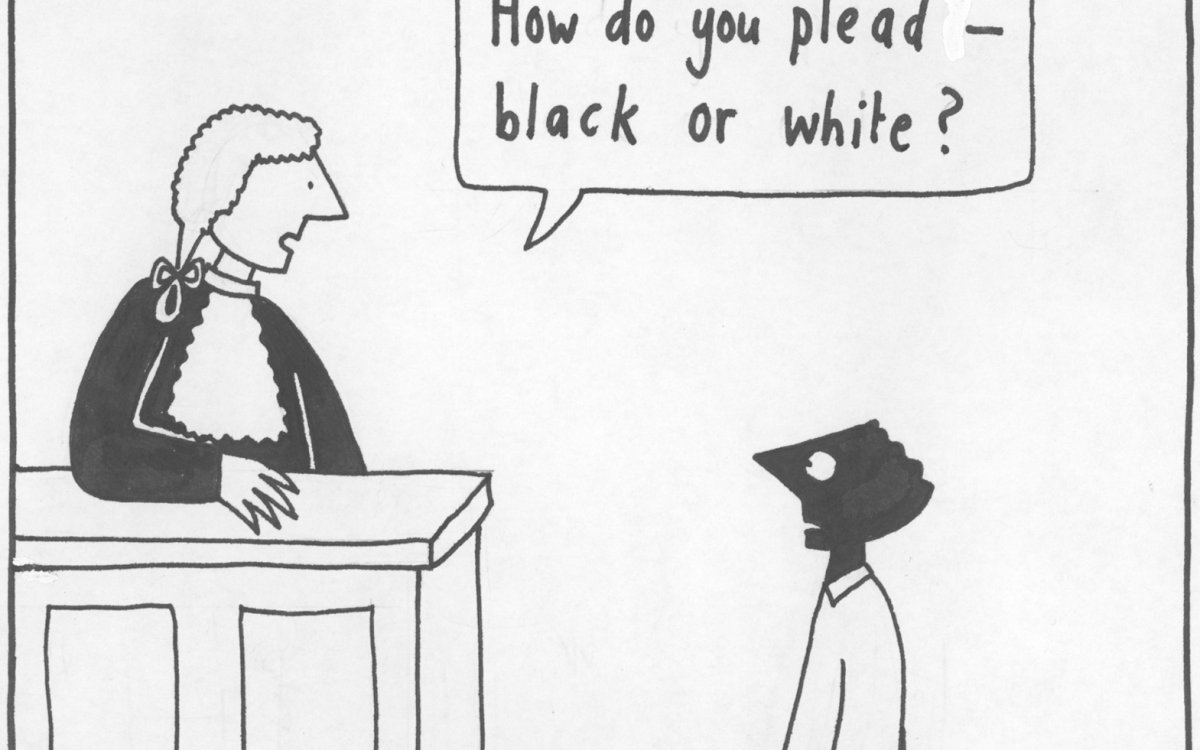
Horacek, Judy, 1961-. (1999). How do you plead, black or white? [picture] / Judy Horacek. http://nla.gov.au/nla.obj-148724255
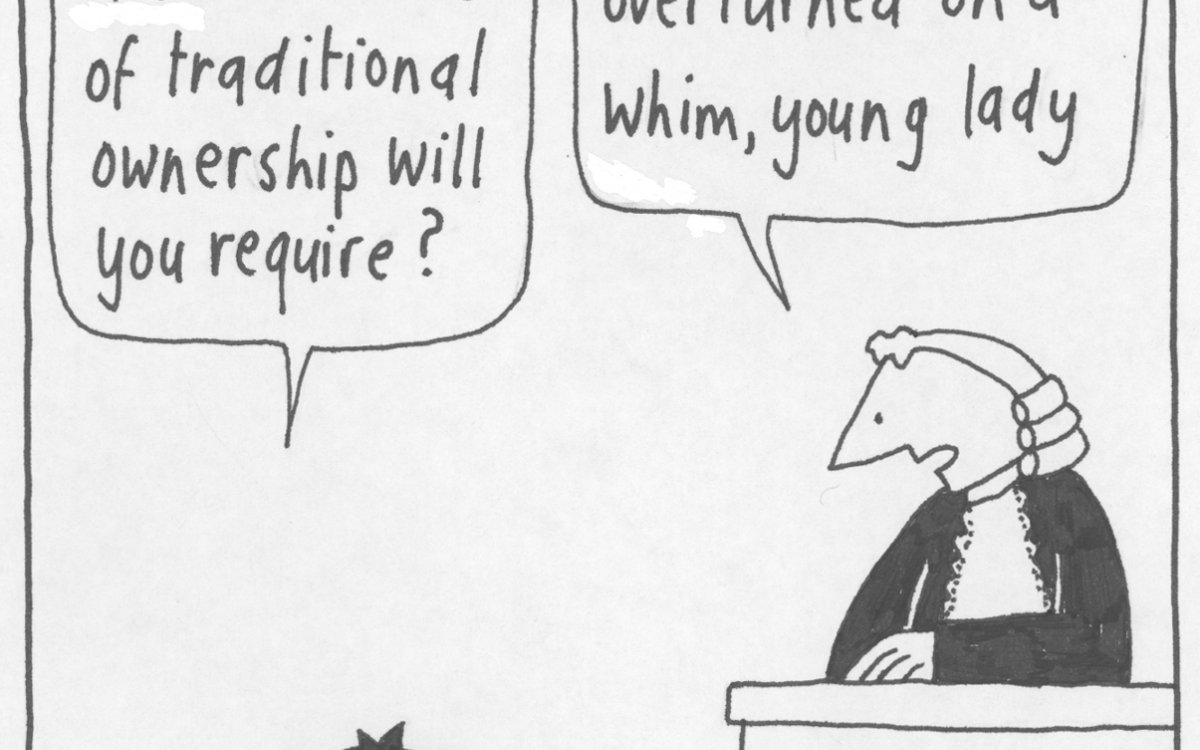
Horacek, Judy, 1961-. (1995). Just how much more evidence of traditional ownership will you require? The law of finders keepers can't just be overturned [picture] / Judy Horacek. http://nla.gov.au/nla.obj-148724957
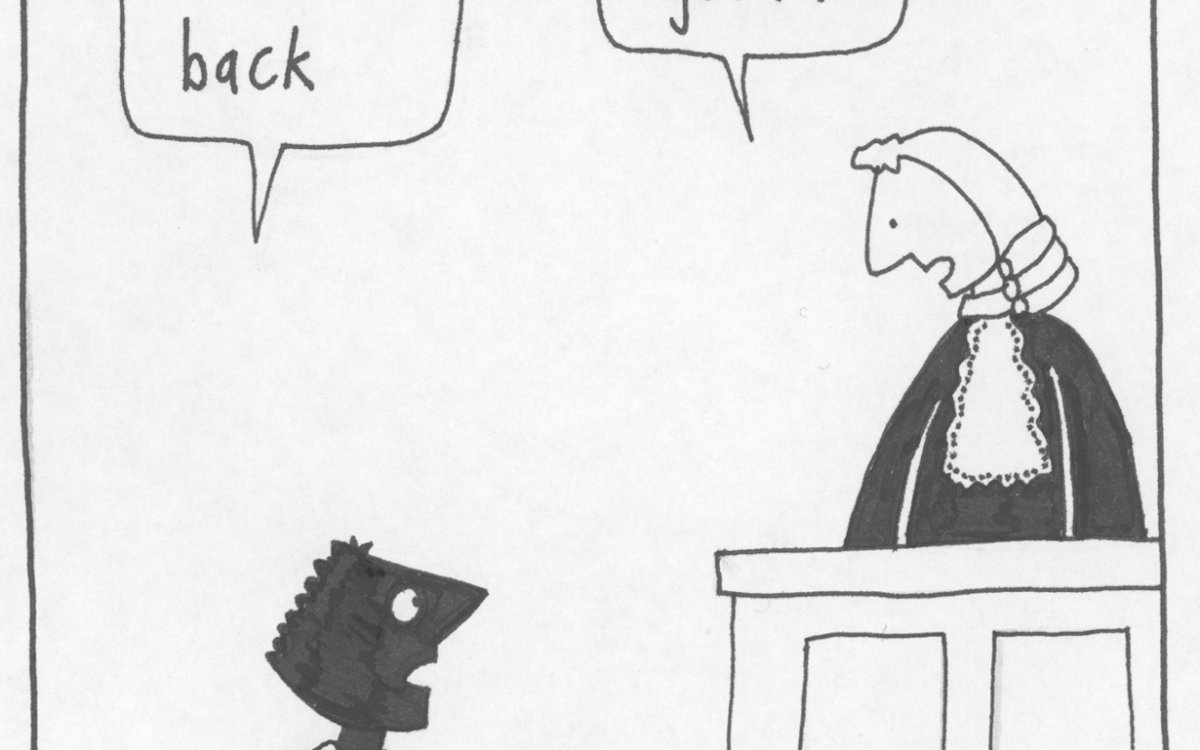
Horacek, Judy, 1961-. (1995). We want our land back [picture] / Judy Horacek. http://nla.gov.au/nla.obj-148725052
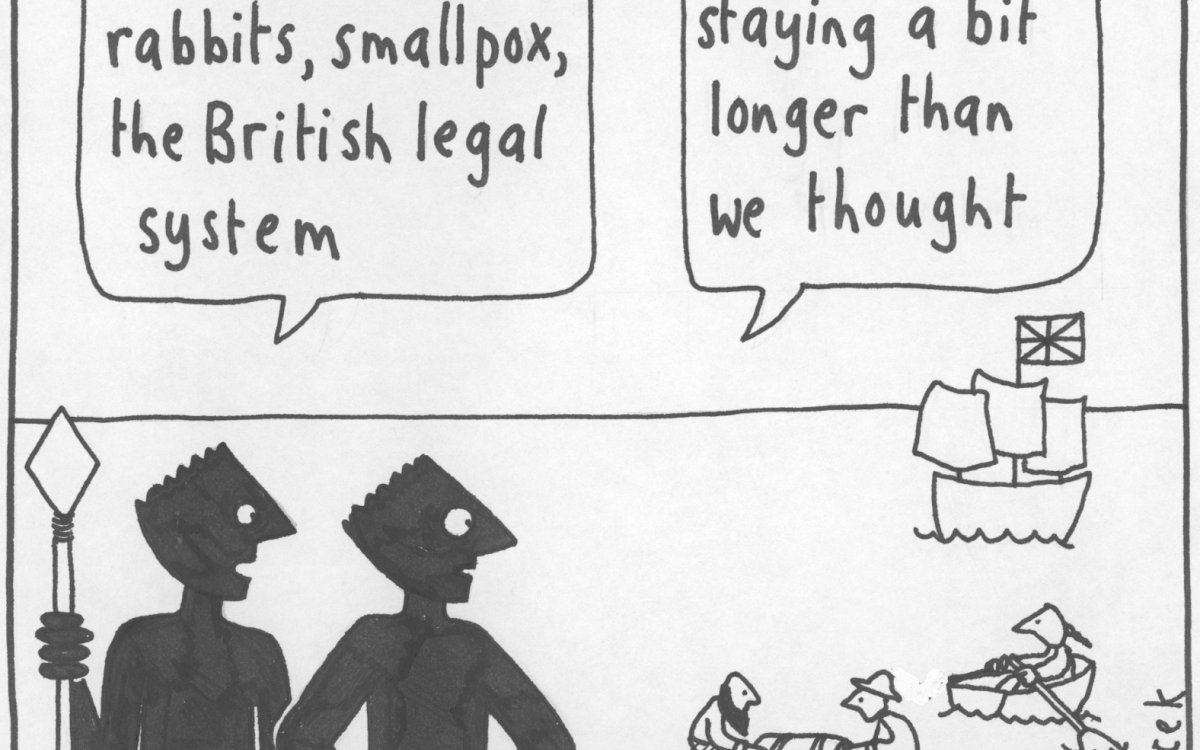
Horacek, Judy, 1961-. (1999). Look at all that luggage - guns, rabbits, smallpox, the British legal system [picture] / Judy Horacek. http://nla.gov.au/nla.obj-148723300
Cartoonists often use cartoons as a way to share their perspective on social issues, such as civil rights.
Discuss the above cartoons:
- What are the major themes of these four cartoons? (colonialism, racial prejudice/racial bias)
- The cartoons are set in different time periods (1700s and contemporary). What do these cartoons tell you about Horacek’s perspective on racism? Does she think that race-based discrimination is still an issue today?
- Do you agree with Horacek’s perspective? Why/why not?
Concluding activities
1. Ask students to think about all of Horacek’s nine cartoons presented in this module and then lead a class discussion:
- What do the cartoons tell us about Horacek’s perspective on the issues she has focused on?
- What factors might contribute to these opinions? (Think about gender, age, location, current political climate and so on.)
- Would the cartoons be the same if Judy Horacek were born as a man in 1918?
2. Have students create a cartoon that expresses their perspective on an important subject. It can be one of the topics covered in this module or a completely different theme.
3. Have students explore the National Library catalogue to find cartoons by other artists. Do they share the same perspective as Judy Horacek on important subjects?
